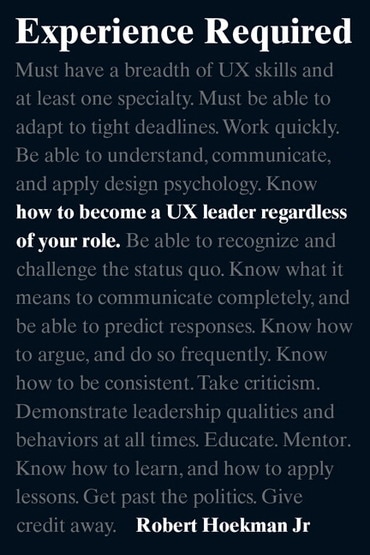Switch content of the page by the Role togglethe content would be changed according to the role
Experience Required: How to become a UX leader regardless of your role, 1st edition
Published by New Riders (November 30, 2015) © 2016
- Robert Hoekman
eTextbook
$23.99
$23.99
Need help? Get in touch

Digital Learning NOW
Extend your professional development and meet your students where they are with free weekly Digital Learning NOW webinars. Attend live, watch on-demand, or listen at your leisure to expand your teaching strategies. Earn digital professional development badges for attending a live session.

